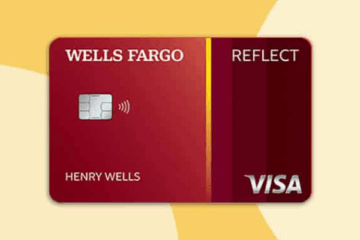Annual Fees vs No Annual Fees: When Is It Worth Paying for a Credit Card Annual Fee?
If you’ve ever researched credit cards in the United States, you’ve surely come across this classic question: is it really worth paying an annual fee? After all, there are several options on the market that offer zero fees and still promise rewards, benefits, and even cashback. But on the other hand, cards with annual fees usually come with exclusive advantages. So… which one should you choose?
Advertising
In this article, we’ll talk about this dilemma in a straightforward and humanized way. We’ll analyze what’s behind the annual fee, who really benefits from paid cards, and most importantly: when this fee makes sense for your pocket and your lifestyle.
What is a credit card annual fee, anyway?
Advertising
First of all, it is important to understand what this famous “annual fee” is that appears in your card’s terms and conditions. The annual fee is basically a fee that the bank or financial institution charges for offering access to the benefits and structure of that card.

But this fee is not just a cost “for having the card.” In many cases, it finances the package of benefits that the card offers: access to VIP lounges at airports, travel insurance, double points, premium loyalty programs, concierge services, and so on.
Advertising
In other words, paying an annual fee is not necessarily throwing money away — but you need to know what you are buying with it.
Cards with no annual fee: the right choice for those looking for convenience
No-annual-fee cards have gained a lot of traction in recent years, especially with the rise of digital banks and fintechs that promise simplicity and transparency. And in fact: if you are someone who only uses your card for basic everyday expenses, don’t travel often, and aren’t interested in more robust points or cashback programs, there’s no reason to pay for a premium card.
Cards with no annual fee generally offer:
- Basic cashback (1% to 2%)
- Access to apps and digital control
- Zero hidden fees
- Security and practicality
And most importantly: they don’t weigh on your budget. It’s a good choice for those who are focused on organizing their finances, building a good credit history, or simply don’t want to spend money on something they won’t fully use.
But what about cards with annual fees? When are they worth it?
Now comes the other side of the coin. Cards with annual fees usually come with a more robust offer, aimed at those who have a little more purchasing power and are looking for a return on their spending — whether in the form of miles, exclusive services, or everyday benefits.
Let’s take an example: a card with an annual fee of $95 per year may offer 3 points per dollar spent on travel and restaurants, while a card with no annual fee offers only 1 point per dollar in any category.
If you spend a lot in these categories, the points you accumulate can easily exceed the value of the annual fee and still offer a profit margin in rewards.
In addition, many cards with annual fees offer:
Generous welcome bonuses, such as 50,000 to 100,000 points after spending a certain amount in the first few months.
- Access to airport lounges, which can mean savings on food and comfort.
- Travel and car rental insurance, which you would otherwise have to pay for separately.
- Hotel upgrades and loyalty programs, which add value for frequent travelers.
- Annual credits for services such as Uber, streaming, hotels, or airlines.
When the math pays off (and when it doesn’t)
The question you need to ask yourself is: how much do I spend per month on my card and where do I spend that money?

Let’s do a quick simulation:
- Suppose you spend $2,000 per month, with $1,000 going to restaurants and $500 to airline tickets.
- A premium card with a $95 annual fee offers 3 points per dollar on travel and dining.
- That means 4,500 points per month, or about 54,000 points per year.
- If each point is worth about $0.01, you would have $540 in rewards for the year.
- Discounting the $95 annual fee, you would still have $445 in net returns.
Now, if you only spend $500 per month on your card and most of it is on groceries and basic bills, perhaps a card with an annual fee is not the best choice. The points you accumulate would hardly cover the annual fee — in this case, a card with no annual fee would make more sense.
But what about the “status” factor? Does it matter?
Although it may seem superficial, for some people the status associated with a premium credit card makes a difference. We’re talking about cards like the Chase Sapphire Preferred, American Express Gold, or Platinum Card, which, in addition to practical benefits, also communicate a certain standard of consumption.
If you work with high-end clients, travel on business, or frequent places where image matters, having a more sophisticated card can literally open doors.
But it’s important to remember: status is useless without financial planning. If the annual fee is weighing on your budget and you can’t take full advantage of the benefits, this may not be the right time to invest in a card of this level.
Final tips for making the best decision
Before choosing between a card with or without an annual fee, consider the following points:
- Analyze your monthly expenses: see which categories you consume the most.
- Research the real benefits: don’t be swayed by marketing alone.
- Calculate the estimated return: use points and cashback simulators to find out how much you can earn.
- Consider the welcome bonus: sometimes, it alone pays for the first year’s annual fee.
- Think long term: will you continue to use this card after the first year?
Conclusion: the best choice is the one that makes sense for you
There is no universal answer. Cards with no annual fee are excellent for those who want control and simplicity. Paid cards are worthwhile for those who know how to use the benefits to their advantage — especially those who travel, consume in specific categories, or want to accumulate points/miles.
The secret is to understand your financial and consumption profile. Only then will you be able to turn your credit card from villain to ally — with or without an annual fee.
See also: How to organize your personal finances.





